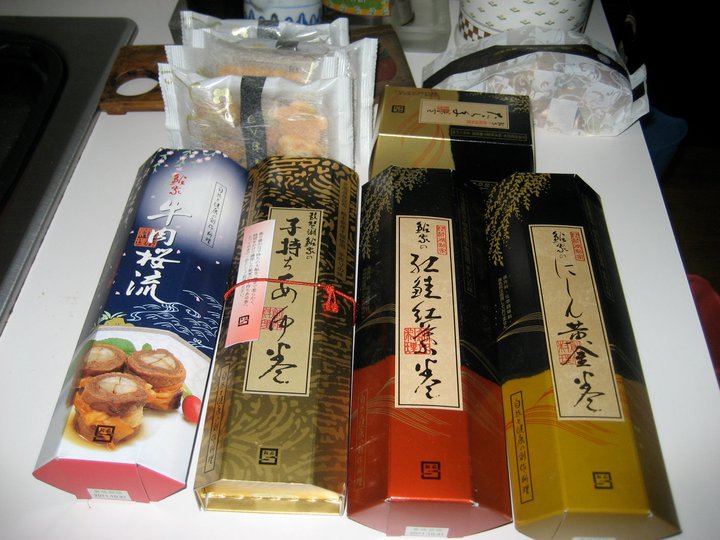So we’re pretty sure that the holidays like Christmas and Thanksgiving were gradually adopted through the years through Gpa’s social engagements with faculty members when he was teaching and from our school events. These were very traditional meals with turkey, pies and lots of sides.
New Year or shōgatsu is a different beast in Japan as it is considered the most important holiday with businesses shutting down much the same way we shut things down here around Christmas. There is a big build-up with cleaning out the home with the idea of purification for the new year, decorating the main gate with kadomatsu (pine gate) to welcome kami (shinto spirits) and kagami mochi (rice cakes), which are said to represent the coming and going of the years and the continuation of the family.

The G’s never decorated our home with pine gates or kagami but we did enjoy some of the traditional foods associated with New Year’s in Japan. Simply prepared Udon and soba would make appearances either on New Year’s Eve or the next day. Gma would say, (through gritted teeth) that the tradition of eating the long noodles was about having a smooth transition into the new year. This is known as Toshikoshi Udon or Soba. If you’re eating soba, then the superstitions were that you were “breaking free from hardships from the past year” since soba is easy to cut while eating; wishing to be tough and resilient like the buckwheat crop, and finally wishing for wealth as buckwheat flour was used to gather leftover gold dust. Along with the soba, Gma also served us roasted mochi that was dipped in a sweet soy sauce she made and wrapped in nori. That was the only time I remember eating mochi during the year and it was so delicious!!

It wasn’t until Ryoko sent Gma a special parcel after Gpa passed away that I learned about the tradition of pre-made foods for the New Year’s or Osechi-ryōri. When the practice began during the Heian period, it was considered “taboo” to cook anything except simple soups during the first three days of the New Year so all the cooking had to be done before the end of the year. In modern times, with all the build-up to the New Year, the tradition of taking a break from cooking has continued. Osechi Ryori is an assortment of colorful dishes that are packed and displayed in boxes called jubako. Each food item has a special meaning in welcoming the New Year like kuro mame (black soybean) symbolizing a wish for health, and datemaki (rolled egg-omelet) symbolizing a wish for many auspicious days. While we never saw a jubako or datemaki (Gma hated it) we did have the rice cakes, noodles and zenzai (sweet red bean soup with mochi).
JustOneCookbook.com has a series of recipes if you’d like to put together your own little jubako or make some “good wishes” dishes for your New Year’s celebration.